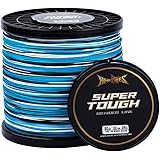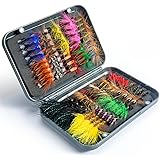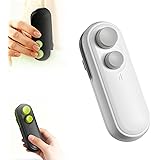Navigating the Waters: Essential Fishing Gear for Beginners
Embarking on the journey into the world of fishing can feel like wading through an ocean of options, especially when confronted with the myriad choices at a tackle store. As is often seen in the accompanying video, the abundance of specialized equipment, from an extensive array of crankbaits to various spinnerbaits and jig heads, can be overwhelming for those just starting out. However, a successful and enjoyable fishing experience does not necessitate an extensive arsenal of high-end gear. Instead, focus should be placed on acquiring a few fundamental pieces of beginner fishing gear that are versatile and user-friendly. This guide is designed to demystify the initial setup, ensuring that essential tools are identified for a confident start to your angling adventures.
Understanding the Foundation: Selecting Your First Fishing Rod
When selecting a fishing rod, consideration is typically given to the type and size of fish that are intended to be caught. Fishing rods are categorized by their power rating, which indicates the rod’s strength and its capacity to handle different weights of line and lures, as well as the fighting power of a fish. These ratings usually range from ultralight to heavy or extra heavy, and are often printed on the rod itself, near the handle.
For instance, ultralight rods, characterized by their delicate construction, are ideally suited for smaller fish, perhaps those weighing less than one or two pounds. Their flexibility allows for the casting of very light lures and lines with precision, and the subtle bites from modest fish are readily detected. On the opposite end of the spectrum are heavy and extra-heavy rods, frequently referred to as “broomsticks” due to their notable thickness and stiffness. These robust rods are engineered for battling substantial fish species, such as large saltwater game fish, catfish, or sturgeon. Furthermore, such heavy power is indispensable when fishing in areas with dense underwater vegetation or numerous snags, as the rod’s strength is needed to extract a hooked fish before it can become entangled.
Another crucial characteristic that is often overlooked by beginners is the rod’s action rating, which describes where along the rod’s length it begins to bend under pressure. A “fast action” rod bends primarily at the tip, providing significant power for a quick and firm hook set, as was observed when a 12-pound carp hardly flexed a fast-action rod. This design ensures that the majority of the rod remains stiff, efficiently transferring power to the hook. Conversely, a “moderate action” rod exhibits a bend across a greater portion of its length. This quality offers superior shock absorption, which can be advantageous when using light hooks or targeting fish with delicate mouths, such as crappies or panfish, preventing the hook from tearing out. An example of this shock absorption was evident as a six-foot moderate action rod bent considerably when a pike was hooked, distributing the stress effectively.
For the majority of individuals beginning their fishing journey, a medium-light or medium power spinning rod is often recommended. This versatile selection provides a good balance, enabling the successful pursuit of a wide array of fish, from smaller bluegills and perch to larger bass, pike, walleyes, carp, and even some salmon species. Its balanced power and action make it a forgiving choice for learning various casting and retrieval techniques.
The Reel Deal: Choosing a Spinning Reel for Beginner Fishing
Once a suitable rod has been chosen, attention is then turned to the selection of a spinning reel, which must be appropriately matched to the rod’s specifications. Information regarding recommended line types and capacities is typically provided on the reel itself. These details include several different line weights and the corresponding lengths (in yards or meters) that the reel can accommodate. For a medium or medium-light rod, a reel designed to hold 6 to 10-pound test line is generally considered a good match, ensuring balance and optimal performance.
The investment for a reliable beginner spinning reel is often in the range of $40 to $50. This price point typically secures a reel that is durable enough to withstand the rigors of initial learning and provides smooth operation without unnecessary complexity, serving as a gateway to understanding reel mechanics without a significant financial commitment. The key is to find a reel that feels balanced with the chosen rod, creating a harmonious system that facilitates easier casting and retrieval.
Casting Confidence: Demystifying Fishing Lines for Novices
The selection of fishing line is another critical component of the beginner fishing gear setup, with three primary types commonly encountered in tackle shops: braided line, monofilament (nylon) line, and fluorocarbon line. Each possesses distinct characteristics that render it suitable for different fishing scenarios and preferences.
- **Braided Line:** This type is recognized for its exceptional strength relative to its diameter, offering superior sensitivity for detecting subtle bites and an absence of memory (the tendency of line to retain coils from the spool) or stretch. However, braided line is typically more expensive, can be quite visible in clear water, and may produce a noticeable sound as it passes through rod guides.
- **Monofilament Line:** Often considered the go-to for beginners, monofilament line is an economical and quiet option. Its ease of casting is a significant advantage, and it possesses relatively low visibility underwater, making it less alarming to fish. A notable characteristic is its considerable stretch, which can act as a shock absorber but also reduces sensitivity. Monofilament also exhibits memory, which can lead to tangles and kinks. The classic Berkley Trilene XL, for example, is a widely available and affordable monofilament that is favored by many.
- **Fluorocarbon Line:** This line type boasts excellent low visibility in water due to its light-refractive properties being similar to water itself. It also has less memory and stretch compared to monofilament and sinks faster, which can be beneficial for certain lure presentations. Nevertheless, fluorocarbon is generally quite expensive and can present challenges during casting, often being stiffer and more prone to tangles if not handled correctly.
For most individuals embarking on their initial fishing endeavors, 8-pound monofilament line is often recommended for use with a medium or medium-light rod. This choice strikes an optimal balance between strength, castability, and cost-effectiveness, providing a forgiving experience as fundamental techniques are mastered.
The Allure of Simplicity: Basic Lures and Essential Tools for Fishing Gear
The vast selection of fishing lures available can easily overwhelm a new angler. However, a strategic approach involves starting with a select few versatile options and focusing on mastering their use. This minimalist philosophy allows for a deeper understanding of how different presentations affect fish behavior without the distraction of too many choices.
A good starting point includes:
- **Bobber and Small Hooks/Jigs:** These are ideal for bluegill fishing. Bluegills are widely distributed and relatively easy to catch, making them an excellent species for learning the basics. It is important to remember that bluegills have small mouths, so appropriately small hooks or tiny jigs are necessary for effective hook sets.
- **Small Soft Swimbait:** These lures mimic small baitfish and can be highly effective across various species. The term “small” is emphasized because smaller baits are generally more versatile, appealing to both small fish and larger predators that are accustomed to feeding on smaller prey. Larger baits, conversely, can deter smaller fish.
- **Small Crankbait:** Designed to dive to various depths when retrieved, small crankbaits can entice a wide range of fish. Their erratic swimming action makes them an attractive target.
- **Small Spinnerbait:** Characterized by a wire frame with one or more spinning blades, spinnerbaits create flash and vibration in the water, mimicking fleeing prey. These are especially useful in areas with light cover.
Alongside the chosen lures, two indispensable tools that should be part of every beginner’s fishing gear kit are needle-nose pliers and line clippers. Pliers are invaluable for safely unhooking fish, especially when hooks are deeply set, and for straightening bent hooks. Line clippers, or even a small pair of sharp scissors, are crucial for cleanly cutting fishing line when tying knots or re-rigging. These practical additions enhance both the safety and efficiency of the fishing experience, allowing for quick adjustments and proper fish handling, which are foundational aspects of responsible angling.








